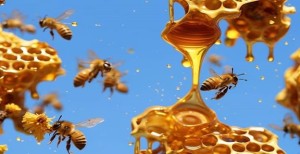
Unveiling the Importance of Diastase Activity Analysis in Assessing Honey Quality
Introduction:
Honey, often referred to as "liquid gold," has been cherished for centuries for its nutritional, medicinal, and culinary properties. However, not all honey is created equal. The quality of honey can vary significantly based on factors such as floral source, processing methods, and environmental conditions. To ensure consumers receive high-quality honey, various parameters are analyzed, with diastase activity being a crucial indicator. Diastase activity analysis plays a vital role in determining the enzymatic activity within honey, providing insights into its authenticity, freshness, and nutritional value.
Understanding Diastase Activity:
Diastase is an enzyme naturally present in honey, primarily derived from the bees' digestive secretions. It plays a pivotal role in converting starches into simpler sugars, facilitating the honey ripening process. Diastase activity refers to the measurement of the enzymatic activity of diastase in honey. This activity is typically quantified using the Schade or Phadebas methods, providing valuable information about honey's enzymatic integrity.
Importance of Diastase Activity Analysis:
1. Authenticity Verification:
Diastase activity serves as a crucial parameter for authenticating honey. The presence of diastase in honey confirms its natural origin, as synthetic or adulterated products often lack this enzyme. By analyzing diastase activity, authorities and consumers can distinguish genuine honey from counterfeit or diluted versions.
2. Freshness Assessment:
Diastase activity analysis offers insights into the freshness of honey. Since diastase is susceptible to degradation over time and under adverse storage conditions, a decrease in diastase activity indicates potential alterations or prolonged storage, compromising honey's quality and nutritional content.
3. Nutritional Quality:
Diastase activity serves as an indicator of honey's nutritional value. Higher diastase activity correlates with increased enzymatic integrity, signifying the preservation of essential nutrients and bioactive compounds. Honey with optimal diastase activity provides consumers with superior nutritional benefits.
4. Regulatory Compliance:
Many countries have established regulatory standards for honey quality, including minimum diastase activity requirements. Diastase activity analysis ensures honey producers comply with these regulations, guaranteeing consumer safety and fair trade practices. Failure to meet specified diastase activity thresholds may result in regulatory penalties or market rejection.
5. Market Competitiveness:
Diastase activity analysis enhances the competitiveness of honey producers in the market. Demonstrating high diastase activity levels signifies superior product quality and authenticity, enhancing consumer trust and brand reputation. Honey brands that prioritize diastase activity analysis gain a competitive edge, attracting discerning consumers seeking premium-quality products.
6. Quality Control:
Diastase activity analysis plays a pivotal role in quality control throughout the honey production process. By regularly monitoring diastase activity levels, producers can identify deviations from the desired standards, enabling timely corrective actions to maintain product consistency and integrity. Quality control measures based on diastase activity analysis ensure that every batch of honey meets stringent quality benchmarks.
Conclusion:
In conclusion, diastase activity analysis is a fundamental parameter for assessing the quality, authenticity, and nutritional value of honey. By quantifying the enzymatic activity of diastase, stakeholders can verify honey's authenticity, evaluate its freshness, ensure compliance with regulatory standards, and maintain product quality throughout the production process. Embracing diastase activity analysis not only safeguards consumer interests but also fosters trust, competitiveness, and sustainability within the honey industry. As the demand for high-quality honey continues to rise, prioritizing diastase activity analysis remains essential for meeting consumer expectations and preserving the integrity of this precious natural resource.
